
Carara National Park (part 4)
May 6th, 2014
I wasn't above photographing the occasional reptile on a birding tour, either :-)
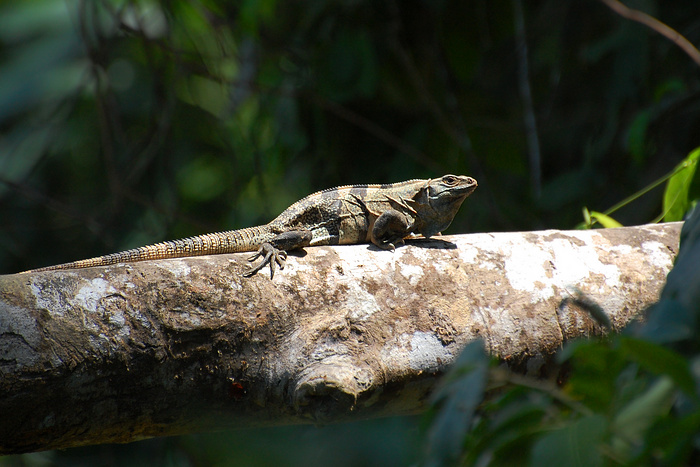
1680x1050 wallpaper
Nor flowers:
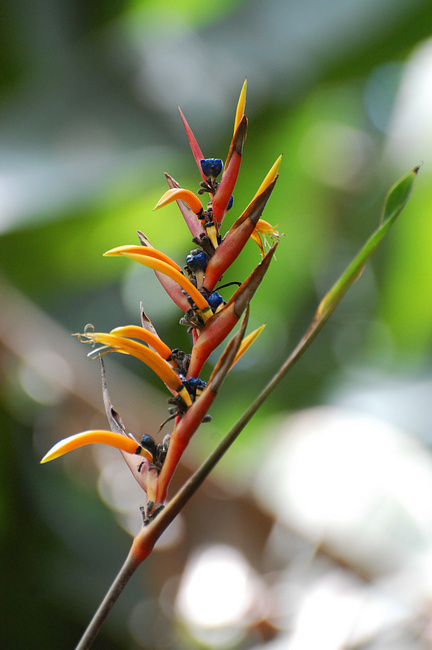
Familiar Turkey Vultures and Black Vultures were ubiquitous in Costa Rica (even on the beach!), but I saw only two King Vultures, both thanks to Johan. The first, my lifer, was in Esquipulas, and was too far away for even a bad picture. Johan spotted this one soaring soon after we came out into the open at the lagoon.
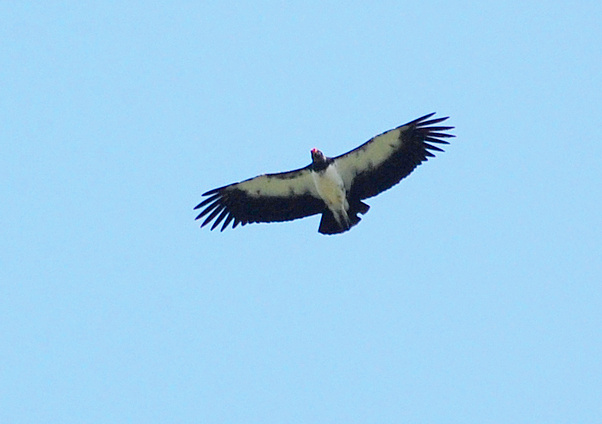
Here's what a King Vulture looks like up close. It's said they're called kings because when they descend to a carcass, other vultures make way. You can kinda see why.
Late in the day, Johan took us to a small creek which is known as a favorite evening bathing spot for a variety of birds, and we stayed there until sunset. This ended up being not only a high point in the Carara trip, but one of the high points of my whole vacation. Photographing it was difficult. The lighting was poor, and my camera wanted tons of exposure time to compensate; I could not possibly hold it steady enough to expose for that length of time without blur. Of course, disturbing the birds with flash was out of the question. I considered fiddling with the ISO setting, and our guide graciously offered to lend me his tripod, but in the end, I decided to just sit and enjoy.
A Red-Capped Manakin was the first to make an appearance. (Red-Capped Manakins, on account of their particular lek dance routine, are called "Michael Jackson birds." They moonwalk. (No, seriously--if you only ever click on one link in my blog, click on this one. You won't regret it.)) Then another, and another still. While one of them was splashing in the water, a Blue-Crowned Manakin perched right over his head--a visceral "wow" moment for both me and Michael. A Black-and-White Warbler (a wintering bird from North America) made an appearance, followed by a Sulphur-Rumped Flycatcher. A Long-Billed Hermit (at six inches, a comparatively enormous hummingbird) zipped in, dipped his tail, and zipped out. A late arrival was a nondescript brown bird called a Thrushlike Schiffornis, which our guide proclaimed to be the best (i.e. rarest) bird of the trip.
The most my camera (and some digital sharpening) could do:
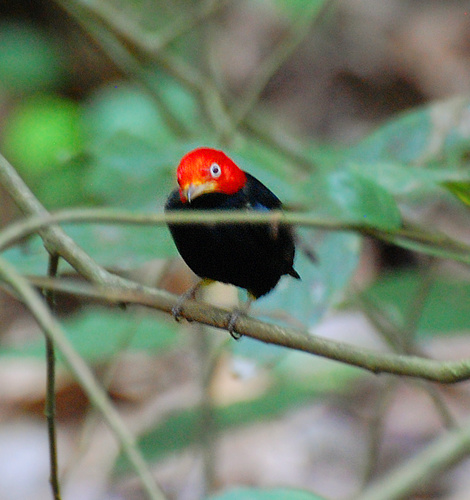
Red-Capped Manakin
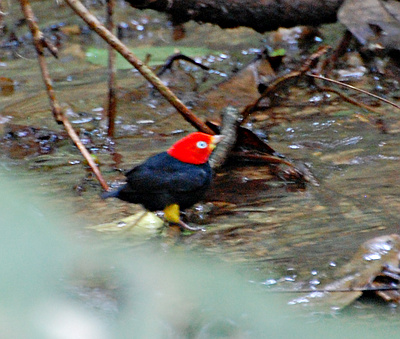
Those things that look like yellow leg warmers are part of the bird. He shows them off when lekking.
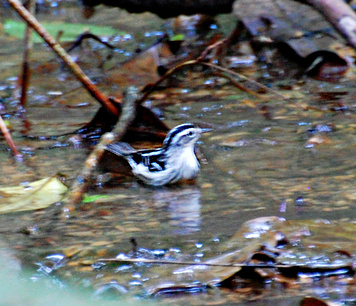
Black-and-White Warbler
When this incredible show was over, alas, Carara was over, and we hurried back down the trail before night set in, accompanied by the lion-like roars of a troop of Howler Monkeys.
May 6th, 2014
I wasn't above photographing the occasional reptile on a birding tour, either :-)

1680x1050 wallpaper
Nor flowers:

Familiar Turkey Vultures and Black Vultures were ubiquitous in Costa Rica (even on the beach!), but I saw only two King Vultures, both thanks to Johan. The first, my lifer, was in Esquipulas, and was too far away for even a bad picture. Johan spotted this one soaring soon after we came out into the open at the lagoon.

Here's what a King Vulture looks like up close. It's said they're called kings because when they descend to a carcass, other vultures make way. You can kinda see why.
Late in the day, Johan took us to a small creek which is known as a favorite evening bathing spot for a variety of birds, and we stayed there until sunset. This ended up being not only a high point in the Carara trip, but one of the high points of my whole vacation. Photographing it was difficult. The lighting was poor, and my camera wanted tons of exposure time to compensate; I could not possibly hold it steady enough to expose for that length of time without blur. Of course, disturbing the birds with flash was out of the question. I considered fiddling with the ISO setting, and our guide graciously offered to lend me his tripod, but in the end, I decided to just sit and enjoy.
A Red-Capped Manakin was the first to make an appearance. (Red-Capped Manakins, on account of their particular lek dance routine, are called "Michael Jackson birds." They moonwalk. (No, seriously--if you only ever click on one link in my blog, click on this one. You won't regret it.)) Then another, and another still. While one of them was splashing in the water, a Blue-Crowned Manakin perched right over his head--a visceral "wow" moment for both me and Michael. A Black-and-White Warbler (a wintering bird from North America) made an appearance, followed by a Sulphur-Rumped Flycatcher. A Long-Billed Hermit (at six inches, a comparatively enormous hummingbird) zipped in, dipped his tail, and zipped out. A late arrival was a nondescript brown bird called a Thrushlike Schiffornis, which our guide proclaimed to be the best (i.e. rarest) bird of the trip.
The most my camera (and some digital sharpening) could do:

Red-Capped Manakin

Those things that look like yellow leg warmers are part of the bird. He shows them off when lekking.

Black-and-White Warbler
When this incredible show was over, alas, Carara was over, and we hurried back down the trail before night set in, accompanied by the lion-like roars of a troop of Howler Monkeys.
| ← | → |

dagibbs
May 6th, 2014 at 11:34 pm
Wow, they do moonwalk!
Mike
May 8th, 2014 at 5:12 pm
Cool vid... much better than the one Johan had on his phone! Good photos given the distance and lighting!
Flower: nice shot... Heliconia Schumanniana?
Mike
May 8th, 2014 at 5:23 pm
No, probably not H. Schumanniana, since that's only reported in South America.
Suzanne
May 8th, 2014 at 5:31 pm
I would guess it's some sort of heliconia. I think I'd need a tropical flowers field guide to say more than that!